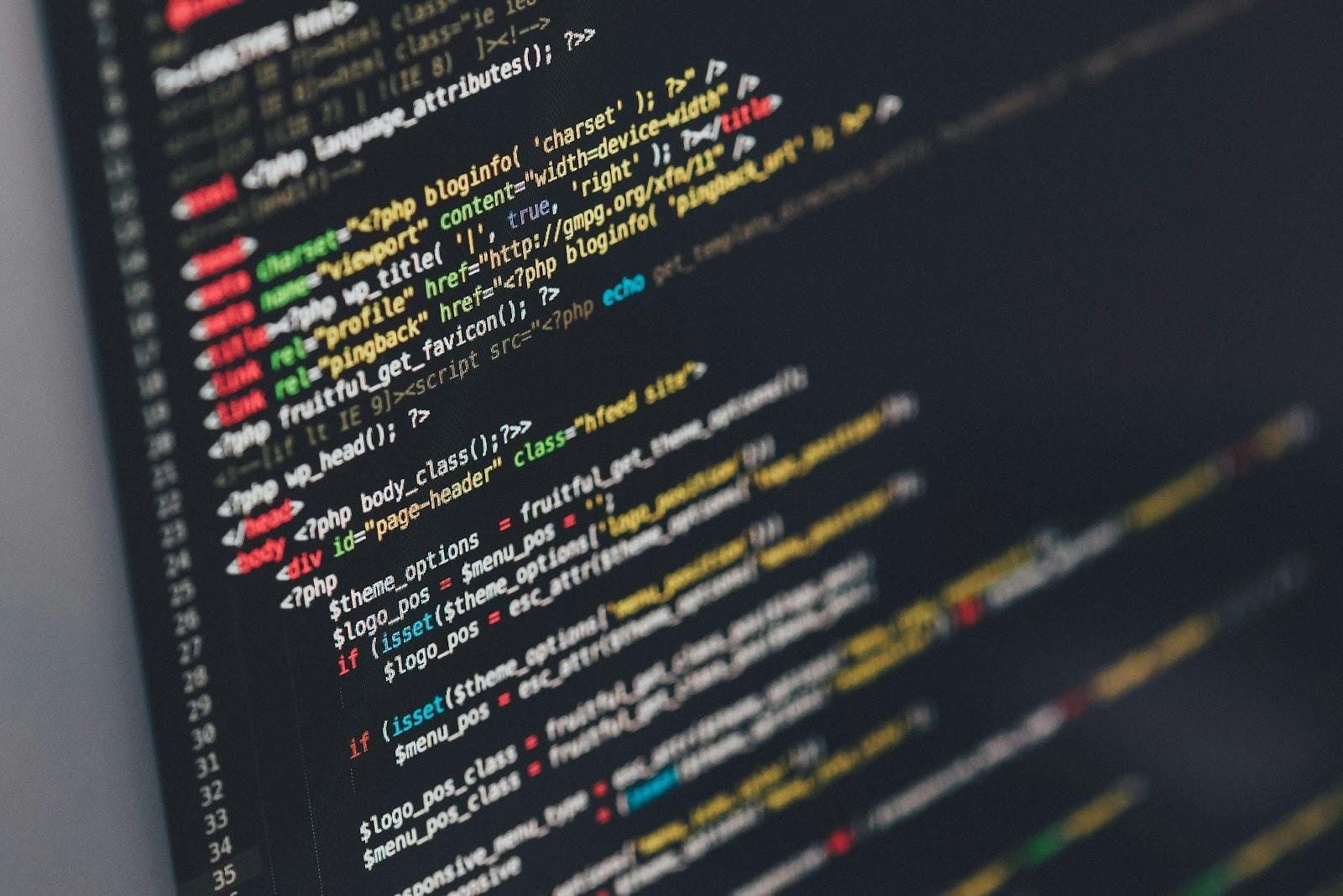- Published on
Best Practices for Writing Maintainable Software
- Authors
- Name
Meta description: Optimize your coding skills and software longevity with these best practices for writing maintainable software; what secrets will you uncover?
Even tech whizzes sometimes deal with a big problem: messy code. It's like having a tangled knot that makes everything harder, slower, and more prone to mistakes.
But there's good news!
This article is ready to offer you some simple rules and tips so you can sort out any coding mess, making it neat and easy to manage. Let's get into some coding best practices.
Source: Unsplash
What Is a Clean Code?
The clean code is clear. It means any person who examines it will have a clear understanding of its purpose. It is easy for anyone to jump in and understand its functionality.
If you're editing code, your main aim should be to leave the code with fewer errors and more neatness than when you found it, so the next person will not have to clean up your mess.
Consistency is key. Starting from the naming conventions to the formatting, keeping it uniform will make your code easier to navigate.
And finally, clean code is self-explanatory. Good code gives you an idea of what it's doing without having to interrupt its meaning. Set valid and meaningful names for the variables and methods in your code, and use comments to explain the reason why it's laid out a certain way, rather than the way it works.
6 Best Practices for Writing a Maintainable Code
A Microsoft survey revealed that developers spend almost half their time debugging and fixing software issues. So, if you're seeking guidance on software development best practices, you might find several helpful websites here.
1. Building Blocks: Organizing Your Code for Clarity
Have you ever asked questions like how to write an inclusive code with consistency and order? Here are some tips to help you out with just that.
The first step is to think of your code as a story of the building blocks that are designed to perform separate functions within your entire program architecture. Here are some strategies:
- Modularization: Reduce the powers of compression into more manageable parts. Then, it becomes clear and concise what each part is communicating.
- Consistent naming: Give simple names (variables, methods, classes) for all your functions. The main thing is to uniform your naming conventions in the code to make it easier to read.
- Code formatting: Use an identical style of coding in each code you create. The indented, spaced-out, and placed-in brackets terms generate a well-formed code.
2. Clear as Day: Making Your Code Easy to Understand
Now we come to the organization of code for a clear purpose, let's discuss the best practices for writing code of clarity and maintainability.
- Keep it simple: Write a concise and readable code that follows a clear path instead of a challenge. Imagine that the future code of your program will be read by others.
- Describe and explain: Try to use names that describe and explain the job of the variable or function. This coding approach makes your code more comprehensible and also cuts down on the development time.
- Stay consistent: Uniform code ought to be maintained. Always structure your responses in the same way. If you're working in a team, try to make sure you are all structuring your code in the same manner so anyone can jump in and edit when required.
- Add comments when needed: Think about the possibility of comments in your web app as well. Even though your code should be simple and clear, sometimes additional explanation is needed.
Source: Unsplash
3. Test It First: Ensuring Your Code Works Every Time
This 'Test First' behavior, mostly embodied in methods like Test-Driven Development (TDD), has the power to ensure code quality as well as maintainability is at a high standard.
Then, if you discover bugs early on during testing, they will then have a low level of complexity and an easier fix before you include them in the core of your code. It also makes you look at your code from the user's point of view, an action that can help you understand how to make your products more user-friendly.
4. Teamwork Tools: Keeping Everyone on the Same Page
Teaming up is becoming the most essential part of keeping the code perfect. Tools like the Git version control system allow for easy collaboration as they keep track of changes and upload contributions.
A project management tool like Jira avoids back and fourth, keeps tasks neat, and makes progress visible. Communication channels like Slack facilitate lightning-speed collaboration. On the other hand, code review tools like GitHub make code quality better through peer review. It facilitates productive collaboration, thus indirectly impacting the productivity of software development.
5. Spotting Bugs: How to Catch and Fix Errors
Finding and fixing bugs early is like catching little hiccups before they turn into big sneezes. It's a crucial part of writing code that's easy to work with in the long run. Remember, every bit of code can have its quirks, so don't sweat it if you find some bugs.
Here are some simple ways to spot and squash those bugs:
- Testing: Think of automated tests like little detectives that sniff out bugs before they cause trouble. They're like having a safety net for your code.
- Code reviews: Getting a buddy to check out your code can be a big help. It's like having a second pair of eyes to catch stuff you might've missed. Plus, it's a chance for everyone to learn and get better together.
- Debugging tools: These tools in your coding playground can help you play detective and figure out what's going wrong in your code. They let you poke around and see exactly what's happening with your variables.
6. Faster, Stronger, Better: Optimizing Your Code's Performance
Let's talk about how you can make your code run faster while still keeping it tidy and easy to work with.
- Identify slow areas through profiling, similar to spotting congested intersections.
- Leverage built-in functions and libraries like trusted shortcuts to save time and effort, so you avoid going the long way around.
- Choose the right tools wisely, maintaining clarity while making speed improvements, just like picking the perfect tool from your toolbox.
- Avoid premature optimization; focus on getting your code working smoothly first, then fine-tune for speed later, like adding nitro to your engine when necessary.
- Remember that clean, organized code tends to run faster and makes for a more enjoyable coding experience.
Common Pitfalls to Avoid
Even skilled developers can stumble into pitfalls when writing code. To avoid these common traps, you'll need to be aware of them and understand the negative impact they can have on your code's maintainability.
- Tangled code messes: Ever had a messy plate of spaghetti? That's what "spaghetti code" is like --- tangled and hard to follow. Plan before you code, stick to rules, and clean up regularly to avoid this.
- Mysterious numbers and values: Imagine finding a secret code in a book --- it's like that with "magic numbers" and hardcoded values in your code. Instead, use clear names and variables so everyone knows what's going on.
- Confusing names: Ever tried solving a puzzle with pieces that have no labels? That's what it's like when your code has poor naming conventions. As mentioned previously, use names that make sense and stick to them for consistency.
- Skipping safety nets: Not having a safety net for your code is like driving without insurance. Proper error handling catches mistakes before they cause chaos. Log errors for reference and fix them properly.
- Performance blind spots: Ignoring performance is like ignoring a leaky roof --- it'll cause trouble later. Be mindful of how your code uses memory, choose efficient algorithms, and consider concurrency for faster performance.
Source: Unsplash
Coding can be simple
So, you see, writing maintainable software isn't rocket science. Just like a novelist weaving a tale, your code tells a story. Keep it clean, clear, and concise.
Avoid the usual pitfalls, strive for continuous improvement, and you'll create a masterpiece that stands the test of time. Follow these practices, and your code will practically maintain itself!



